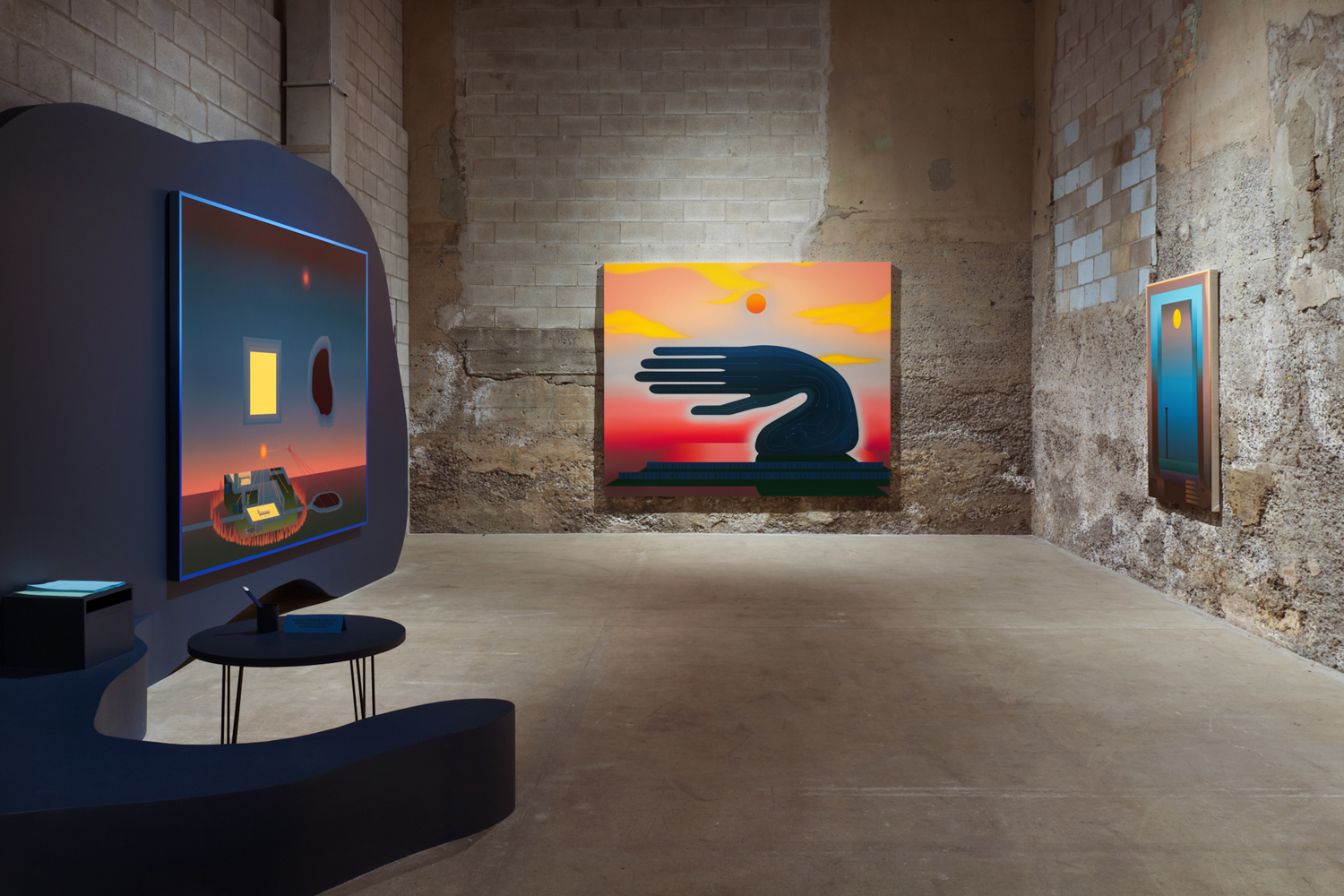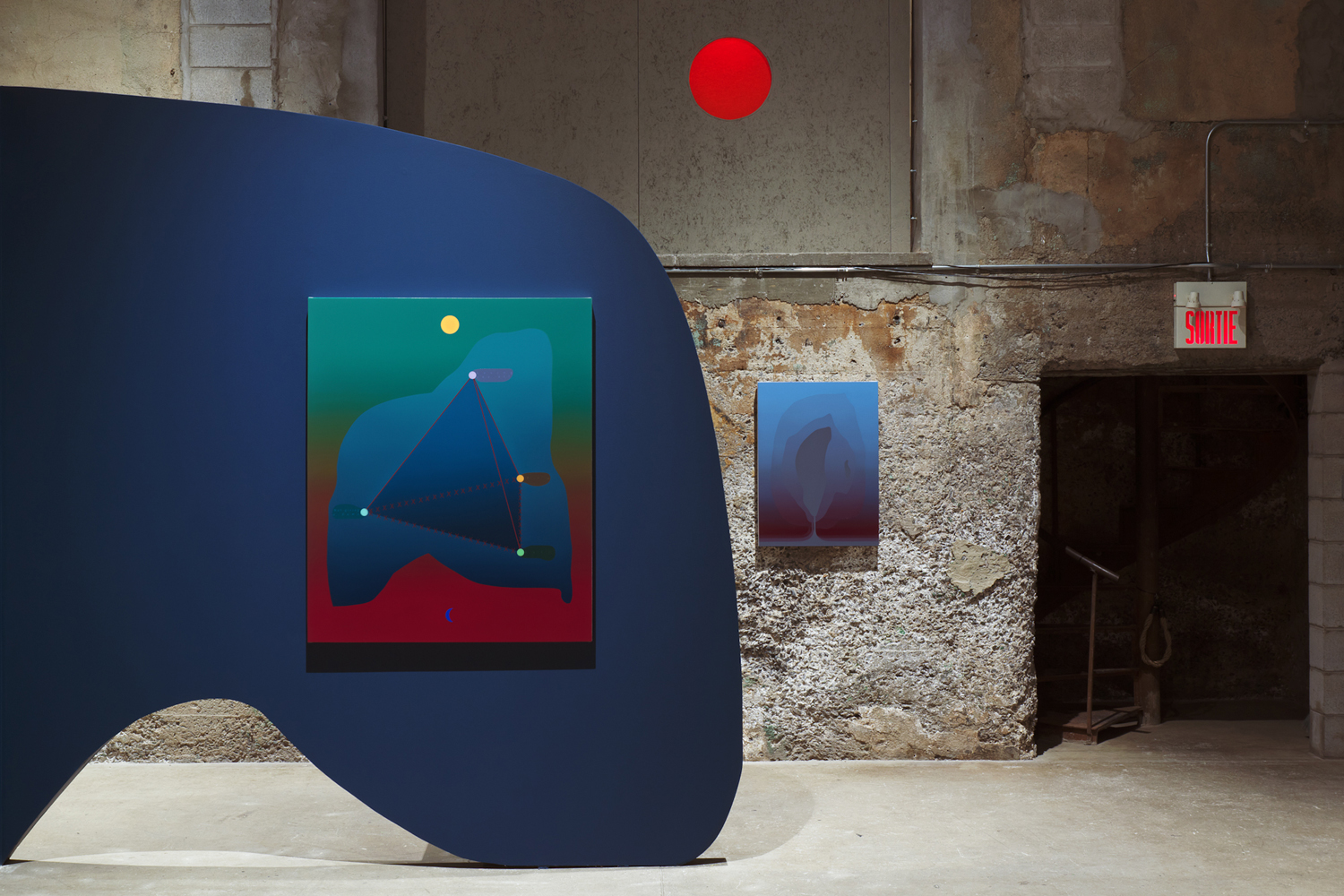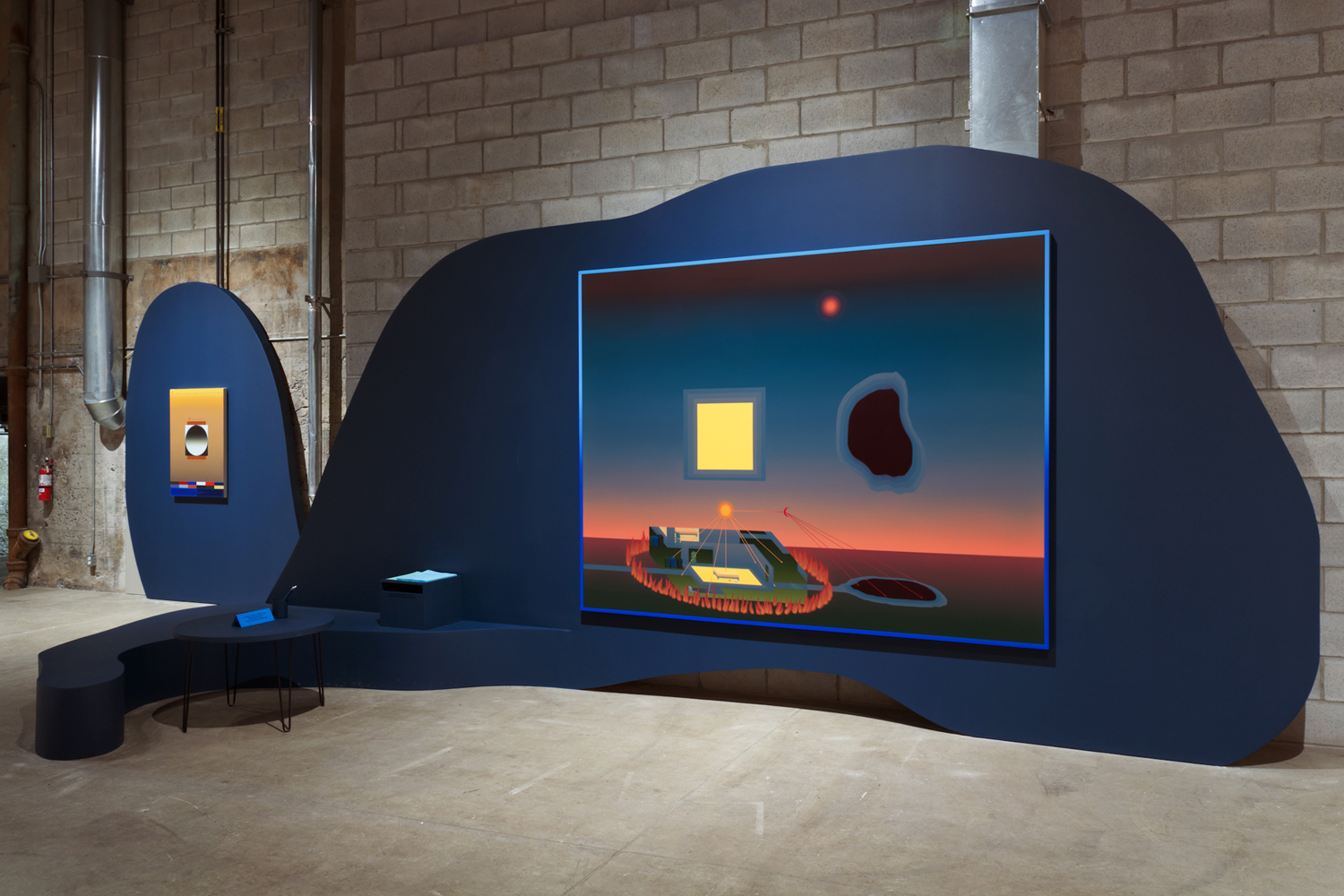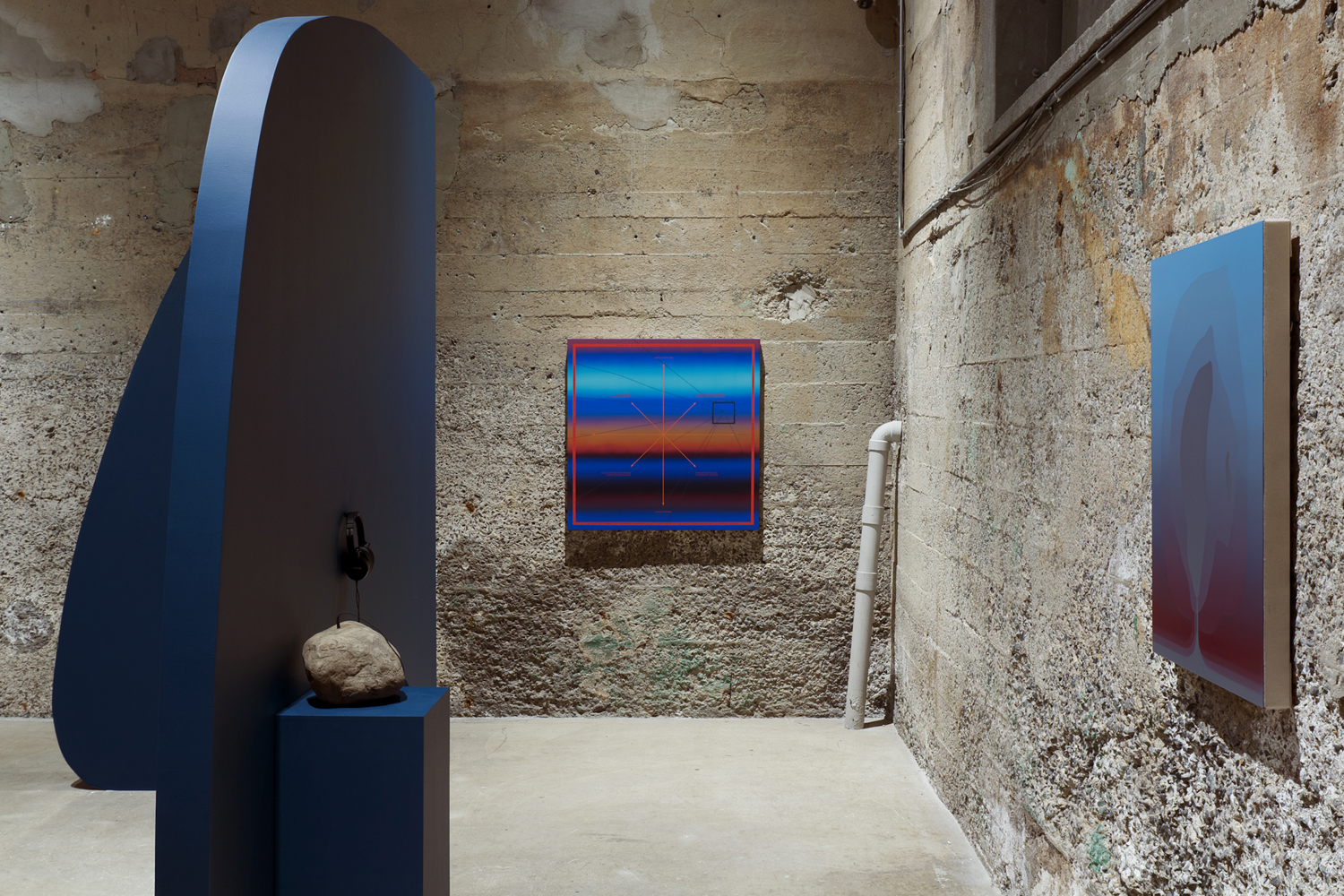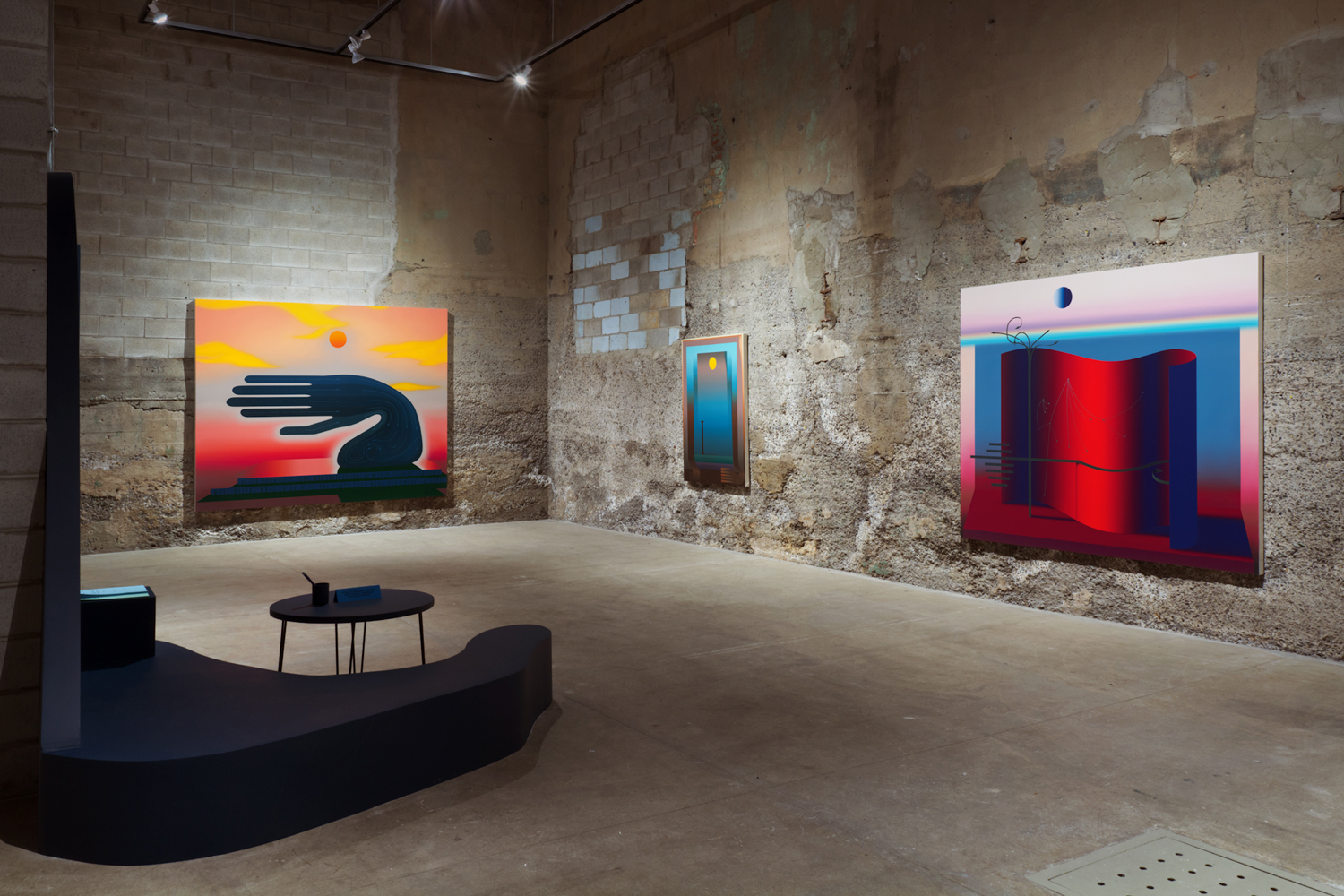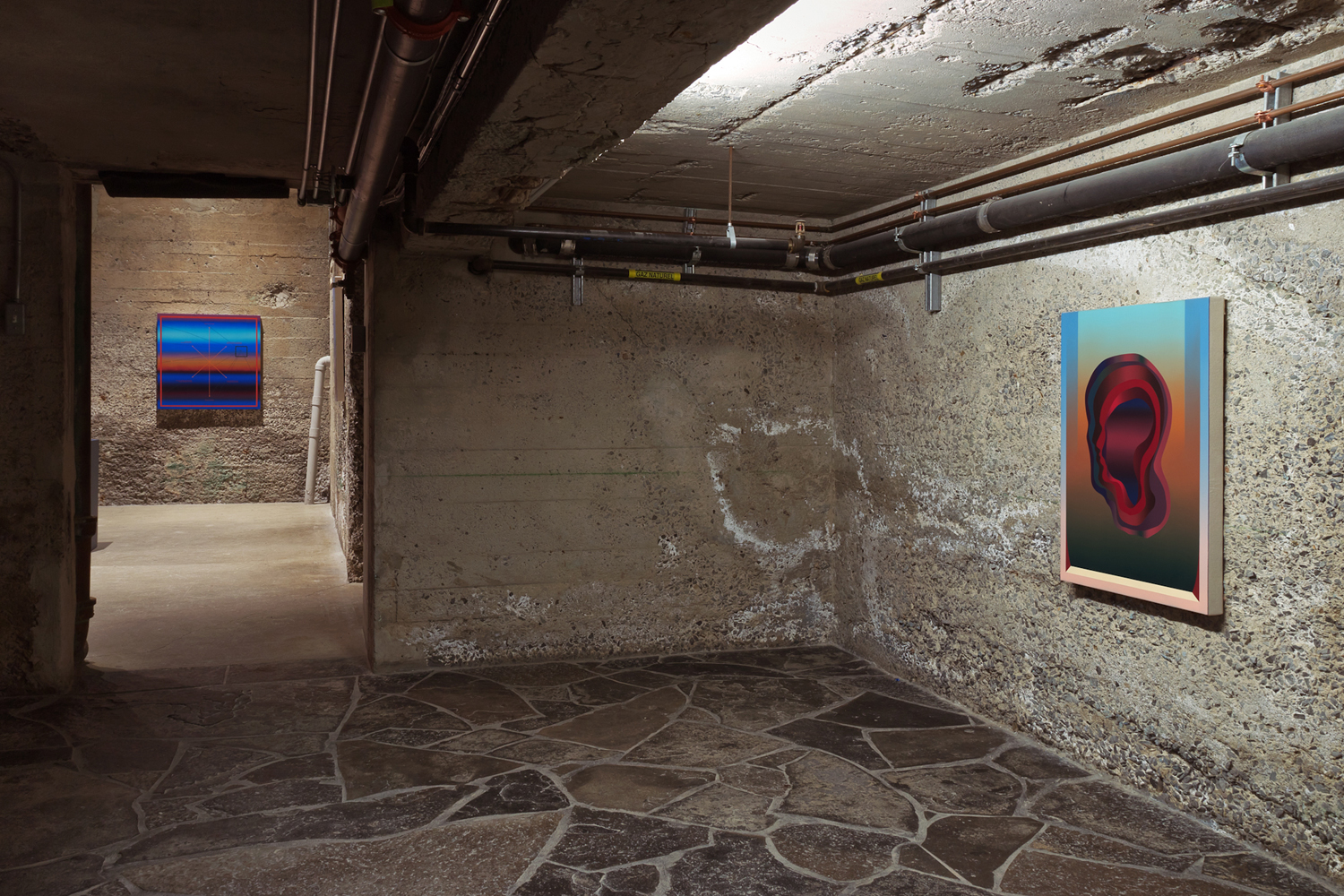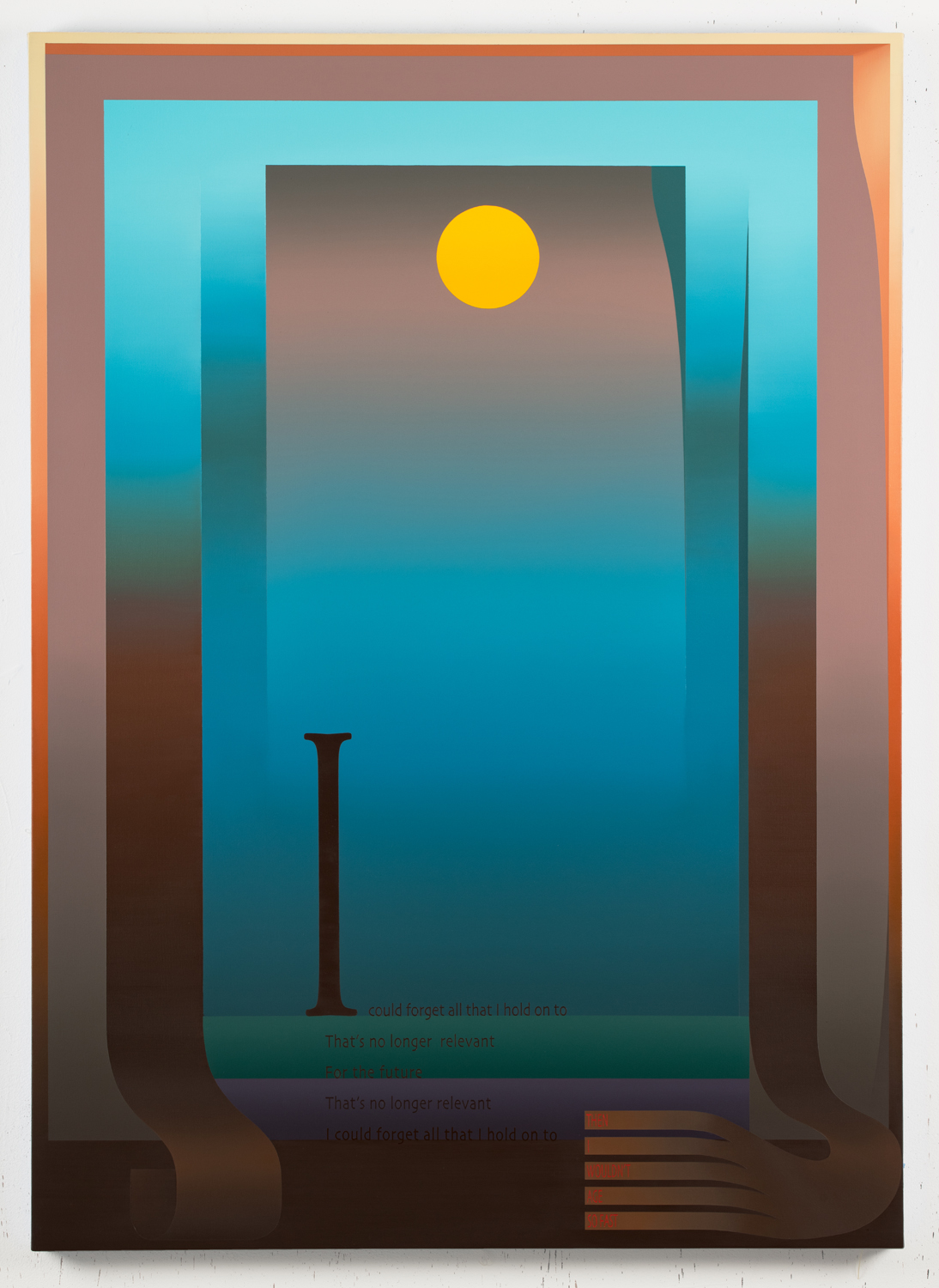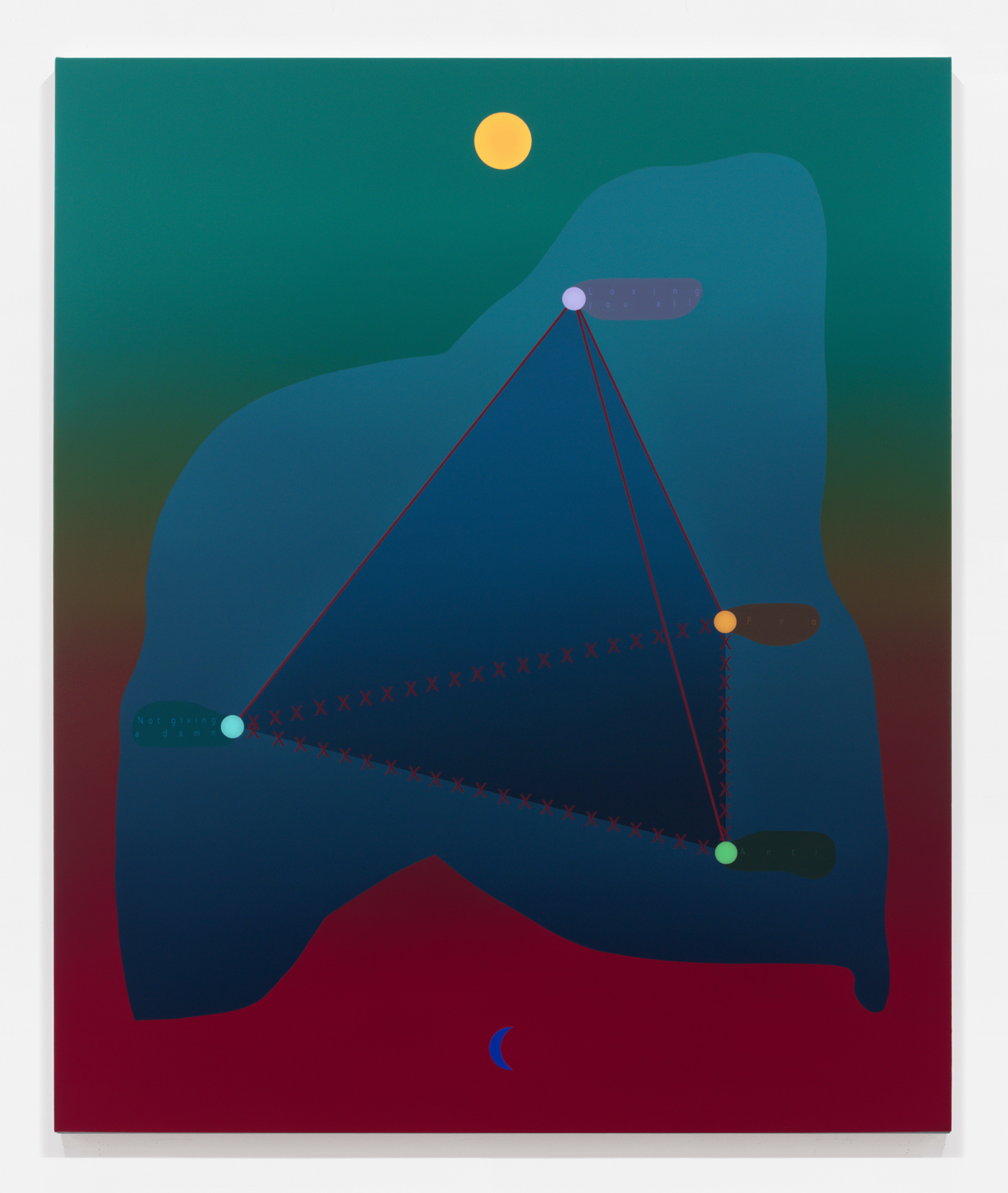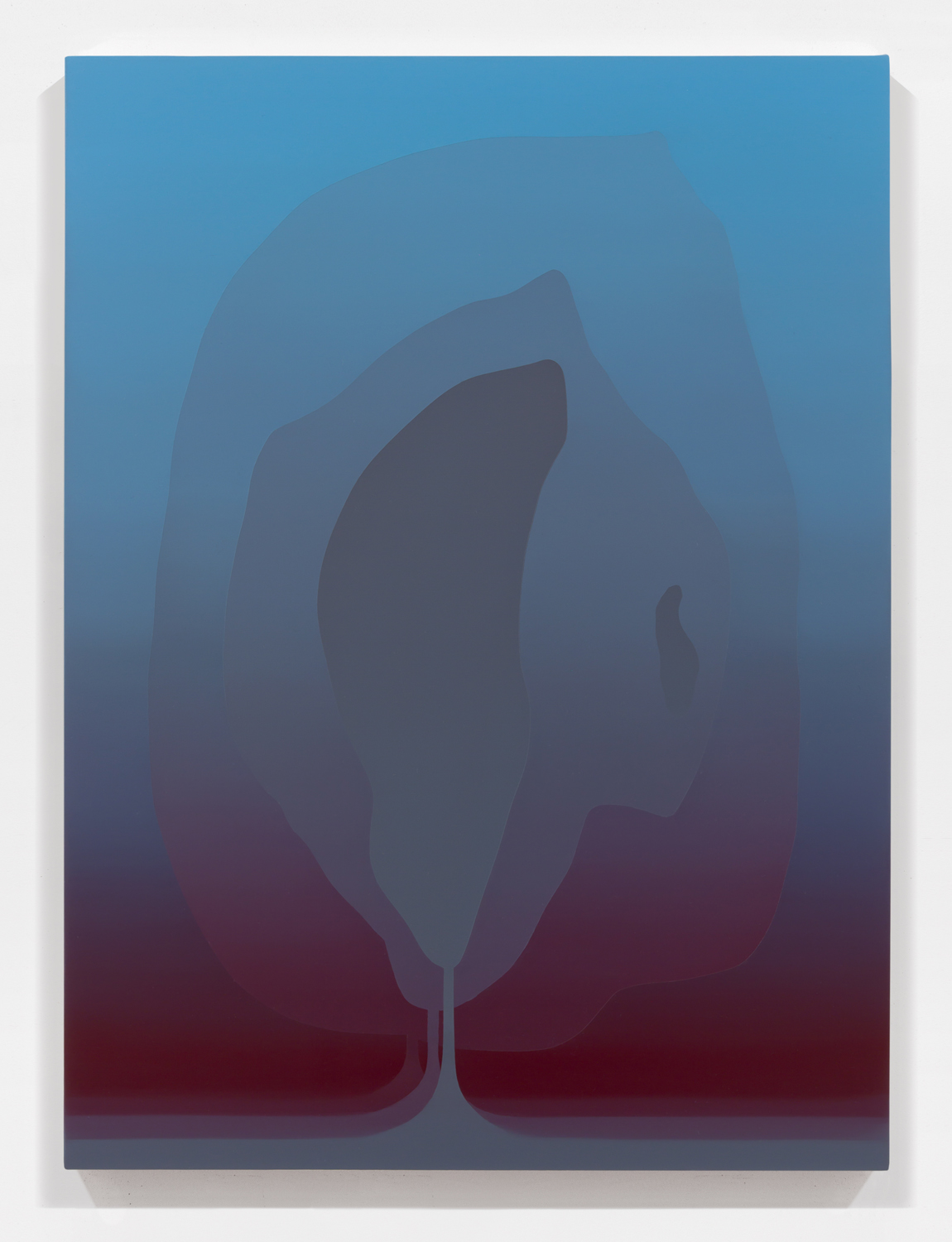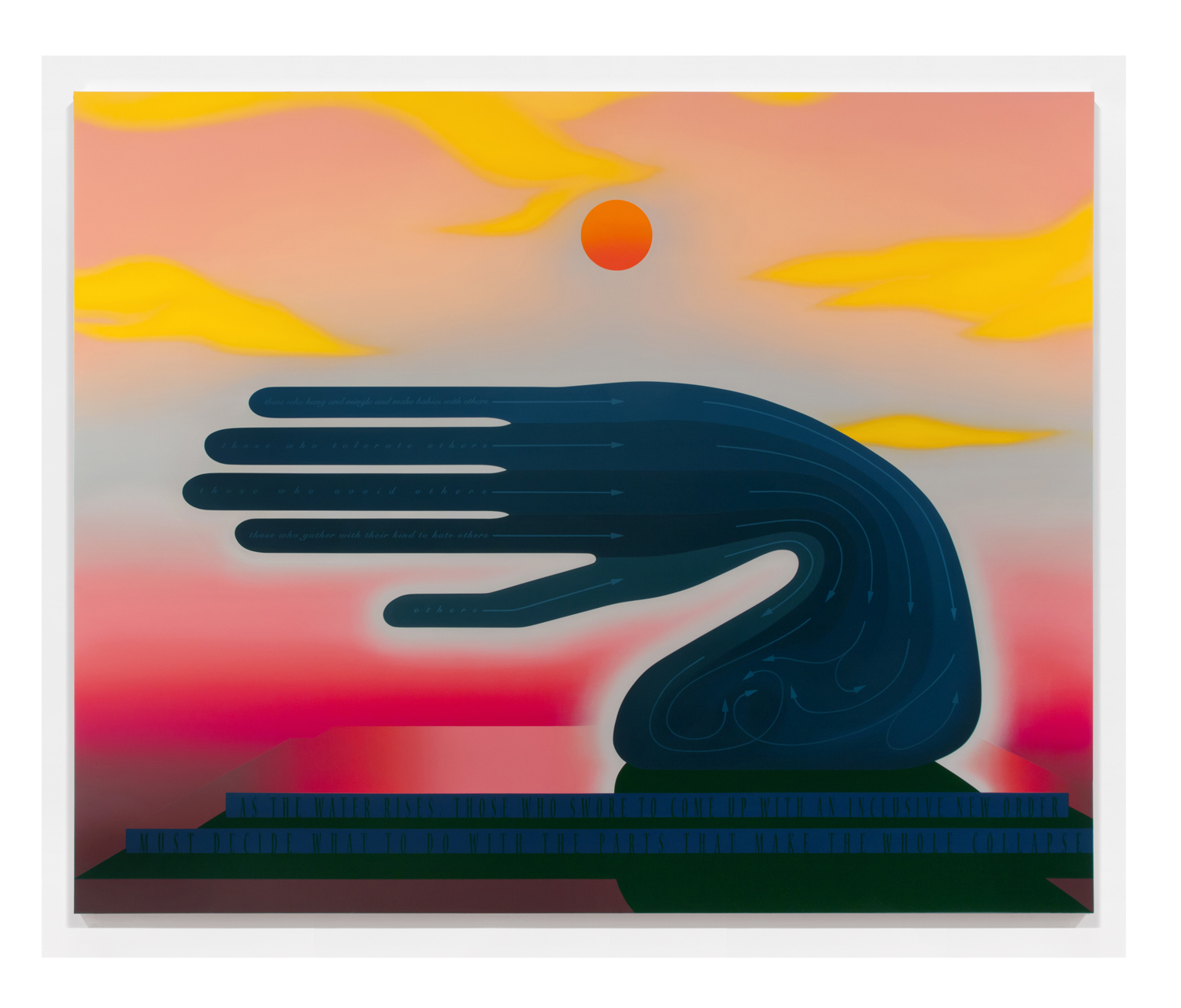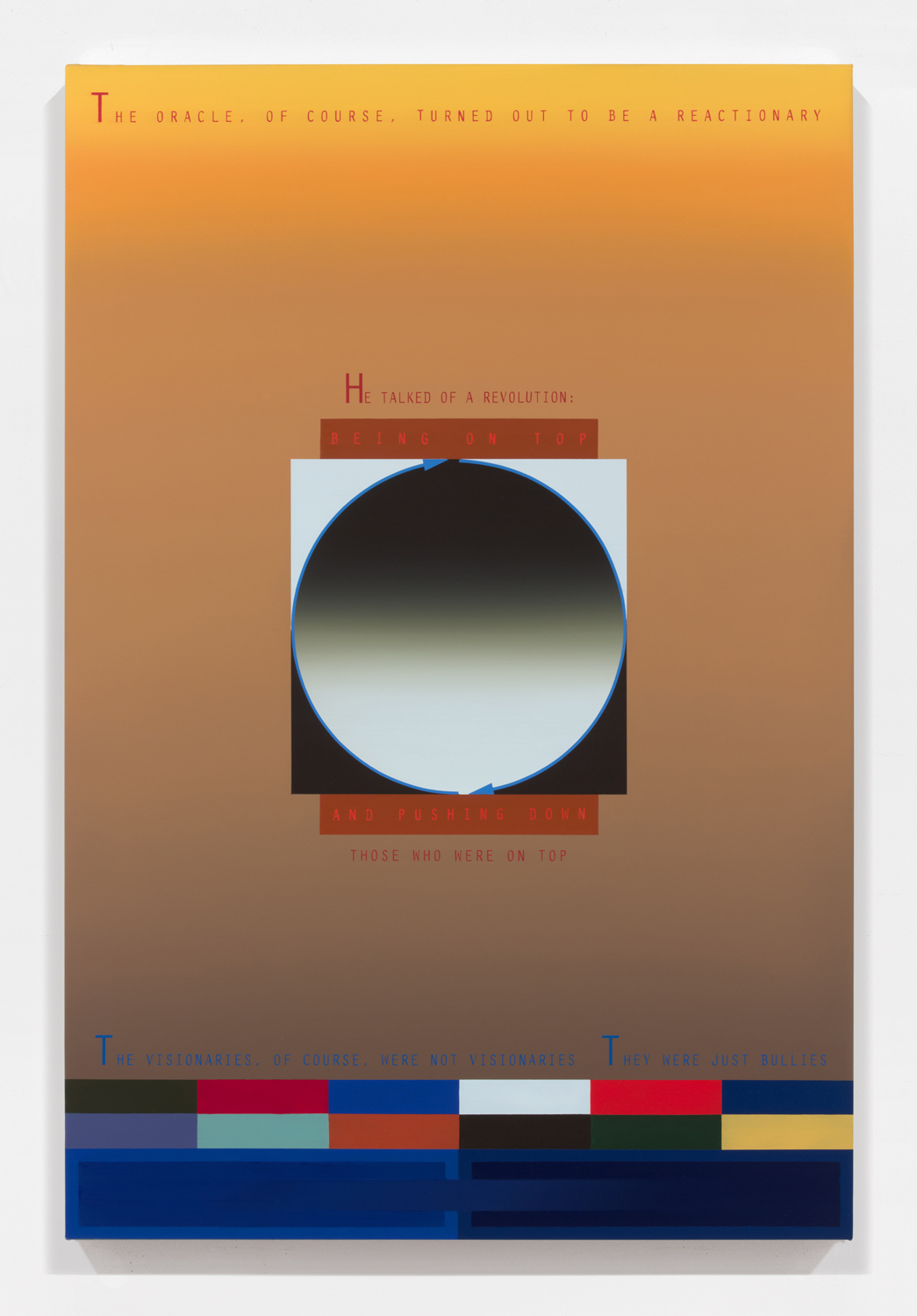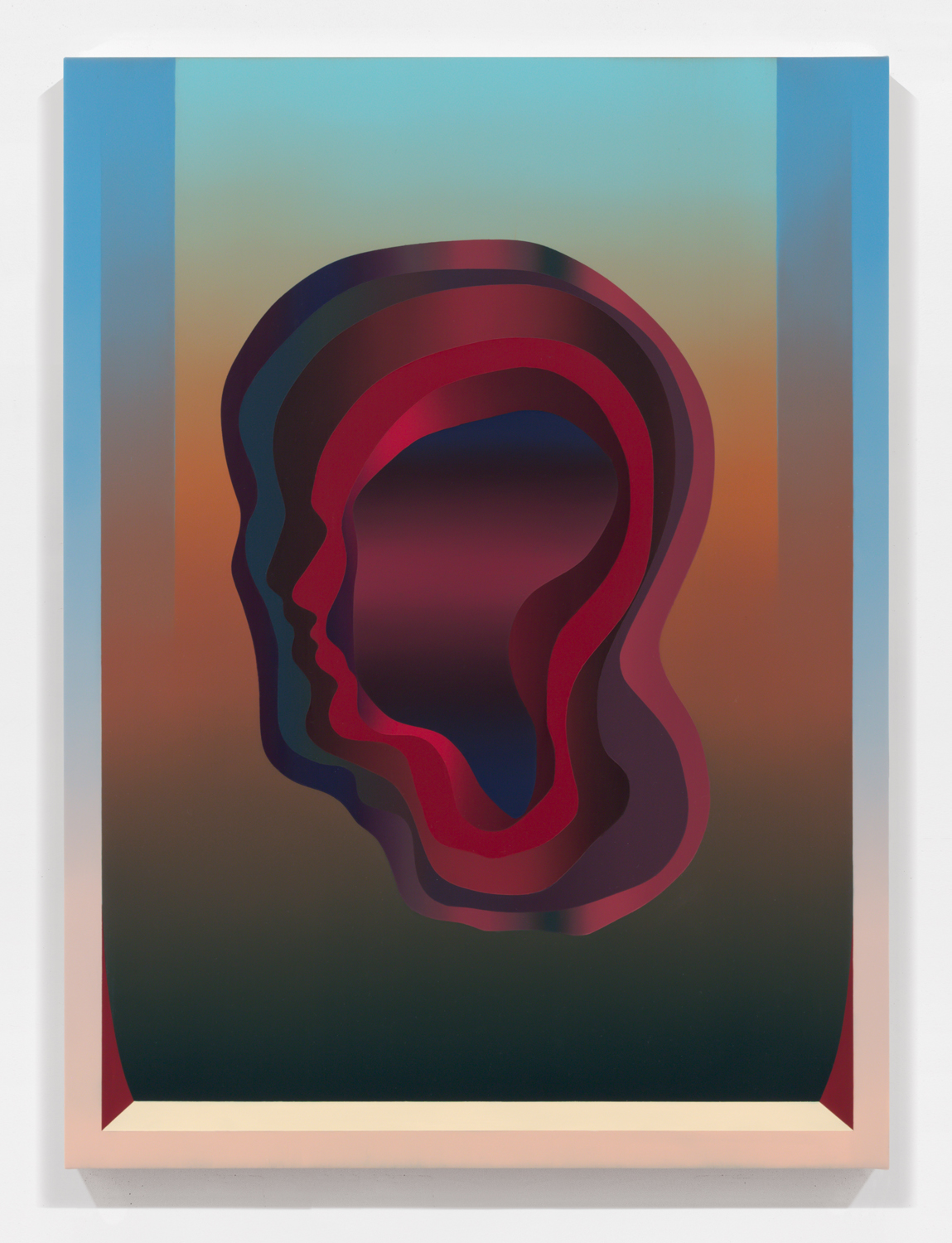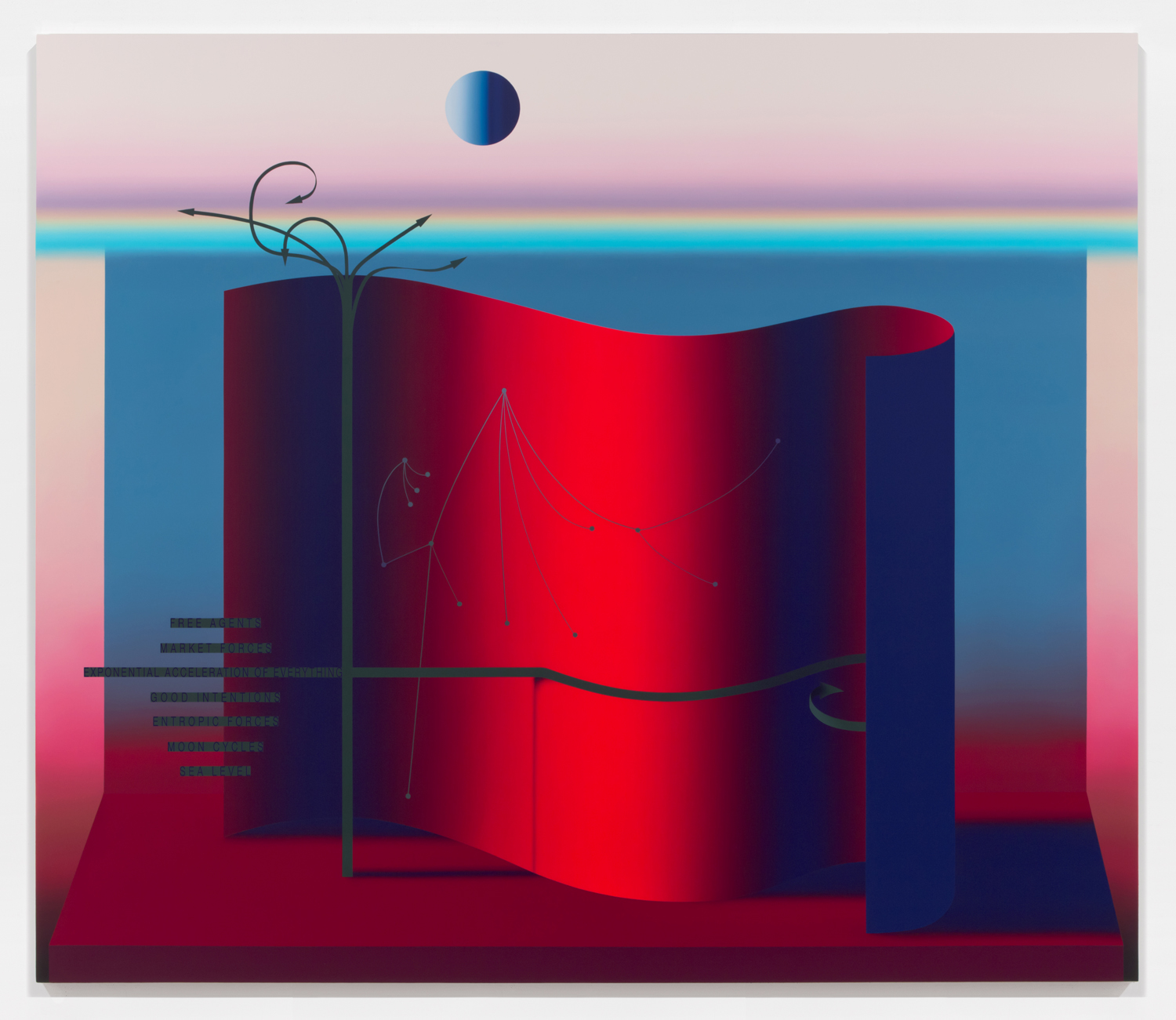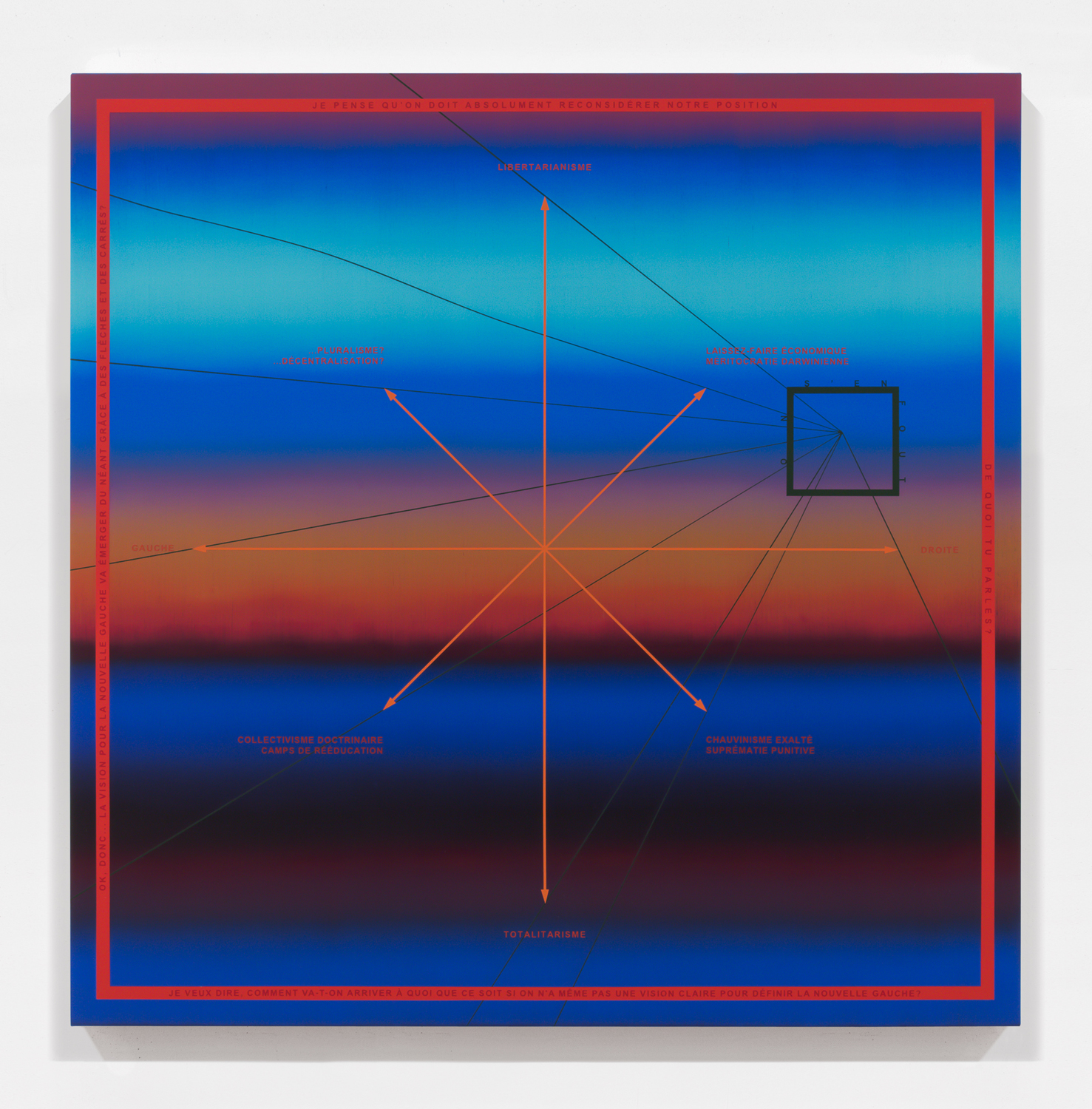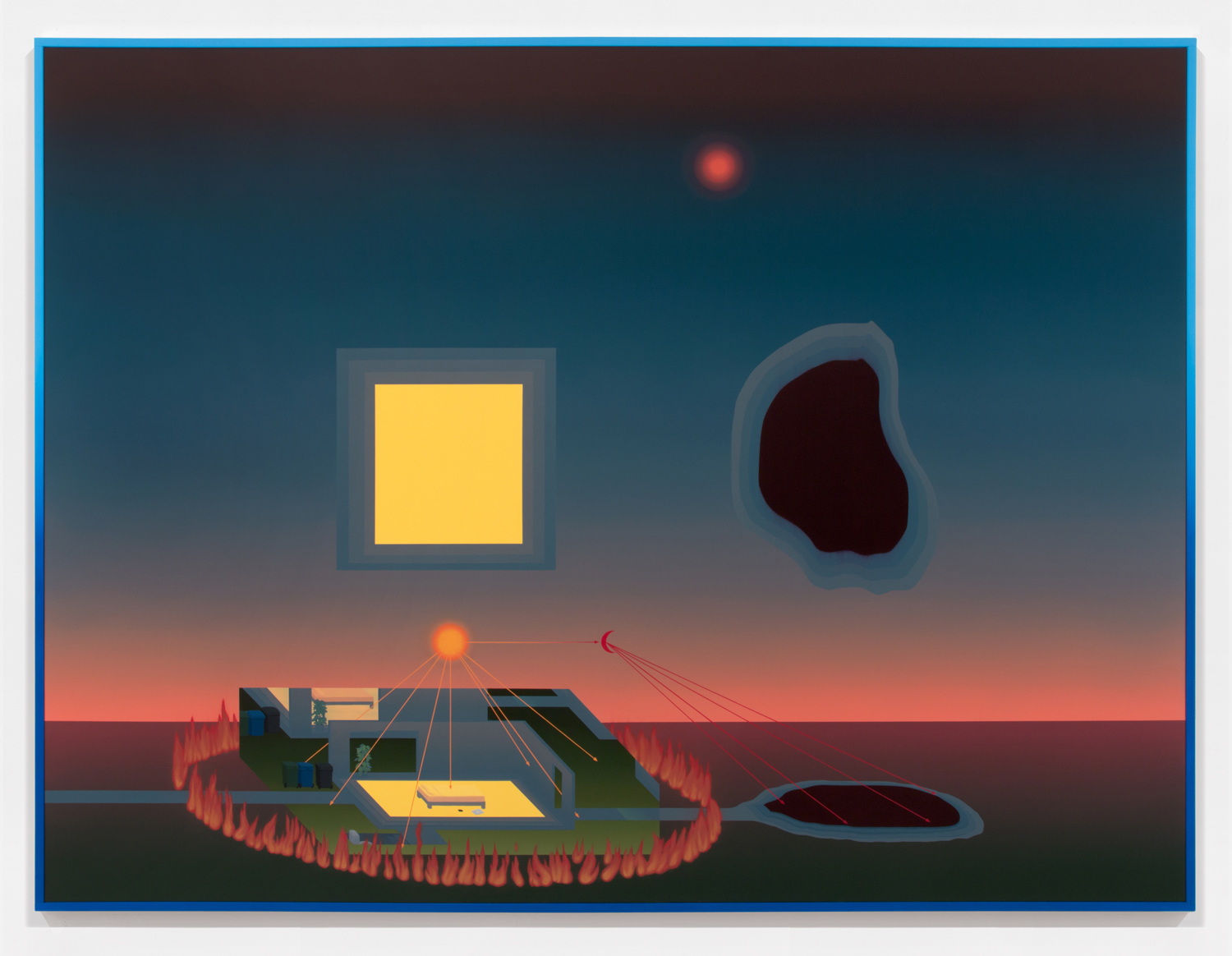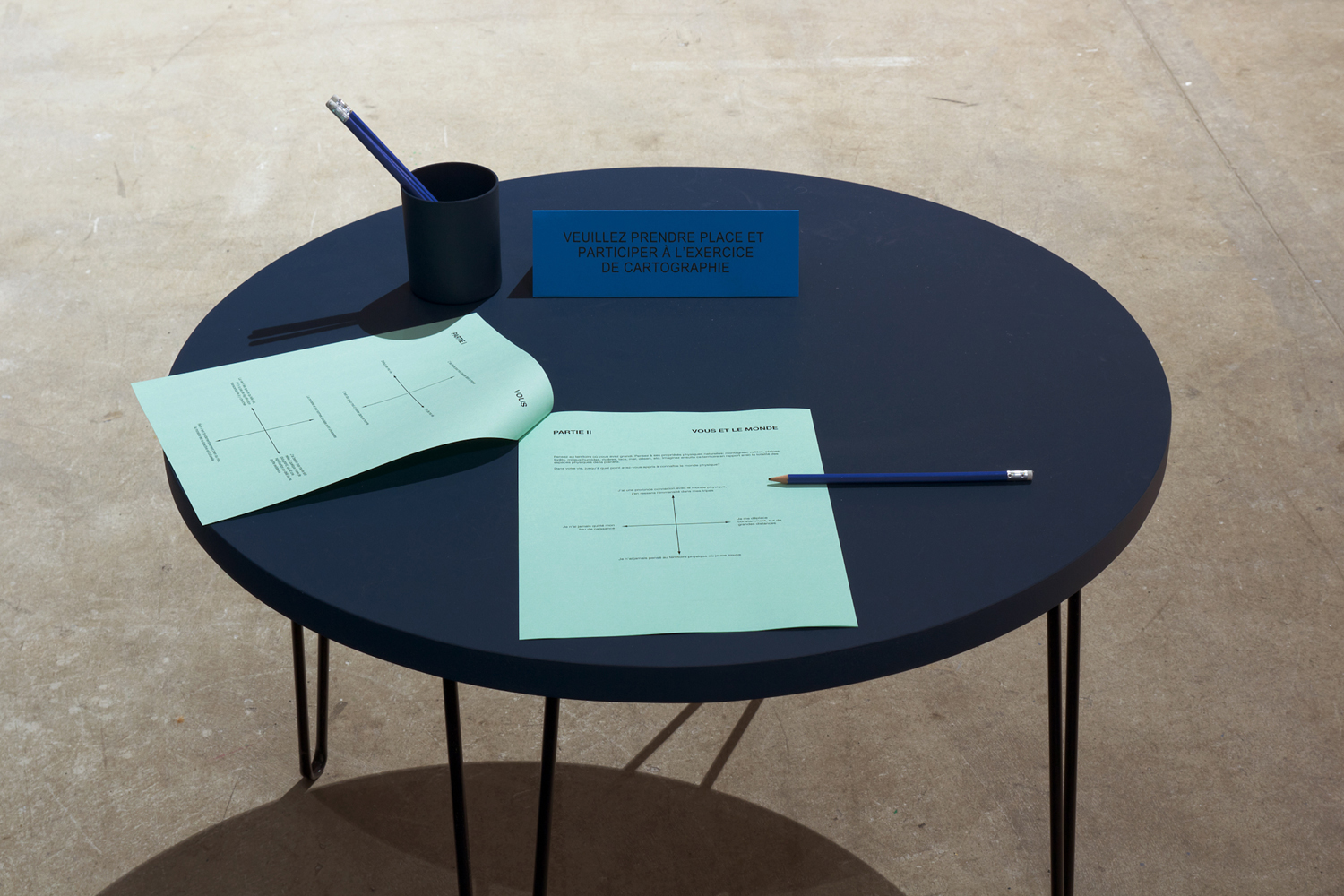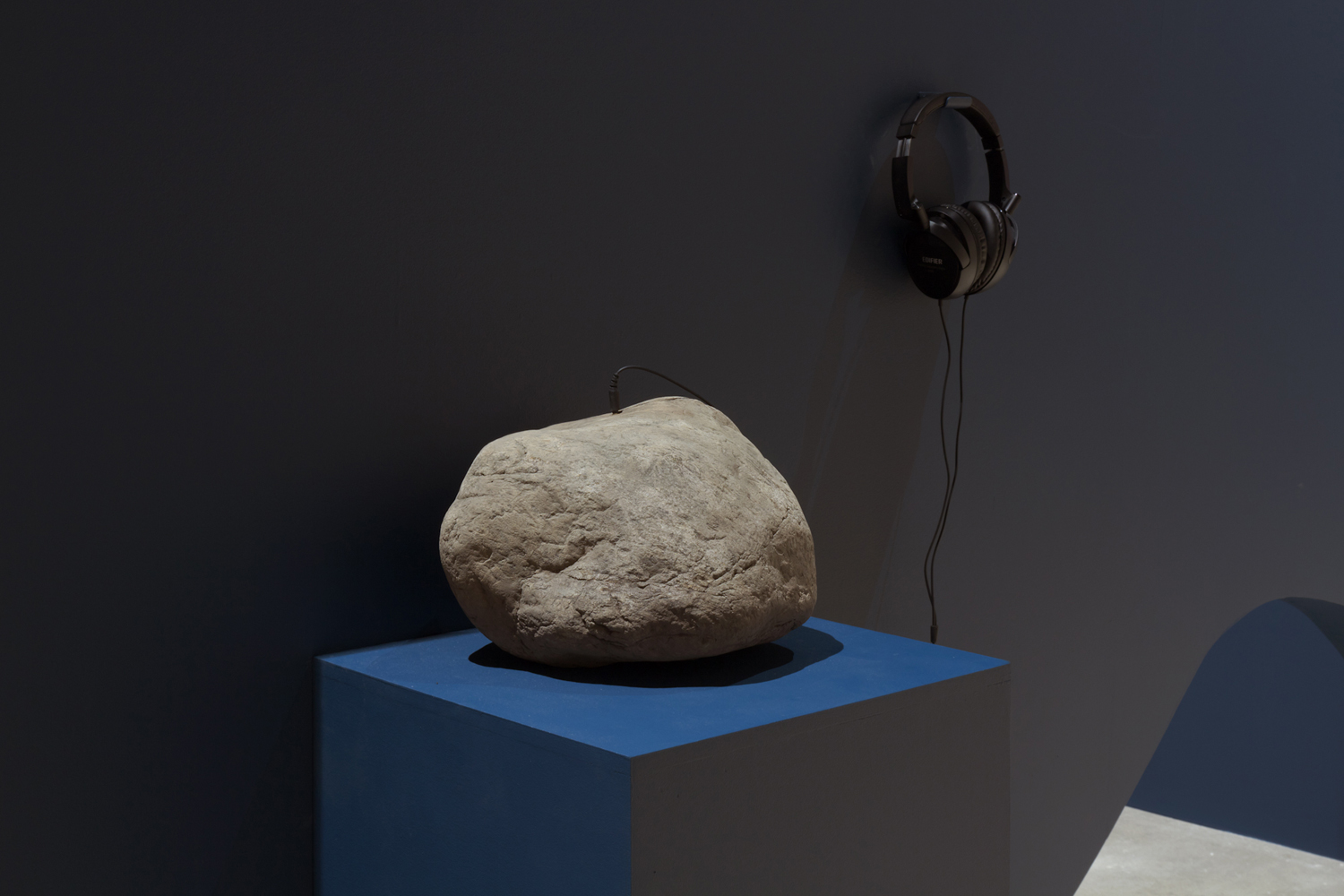Positions
January 24th – March 7th 2020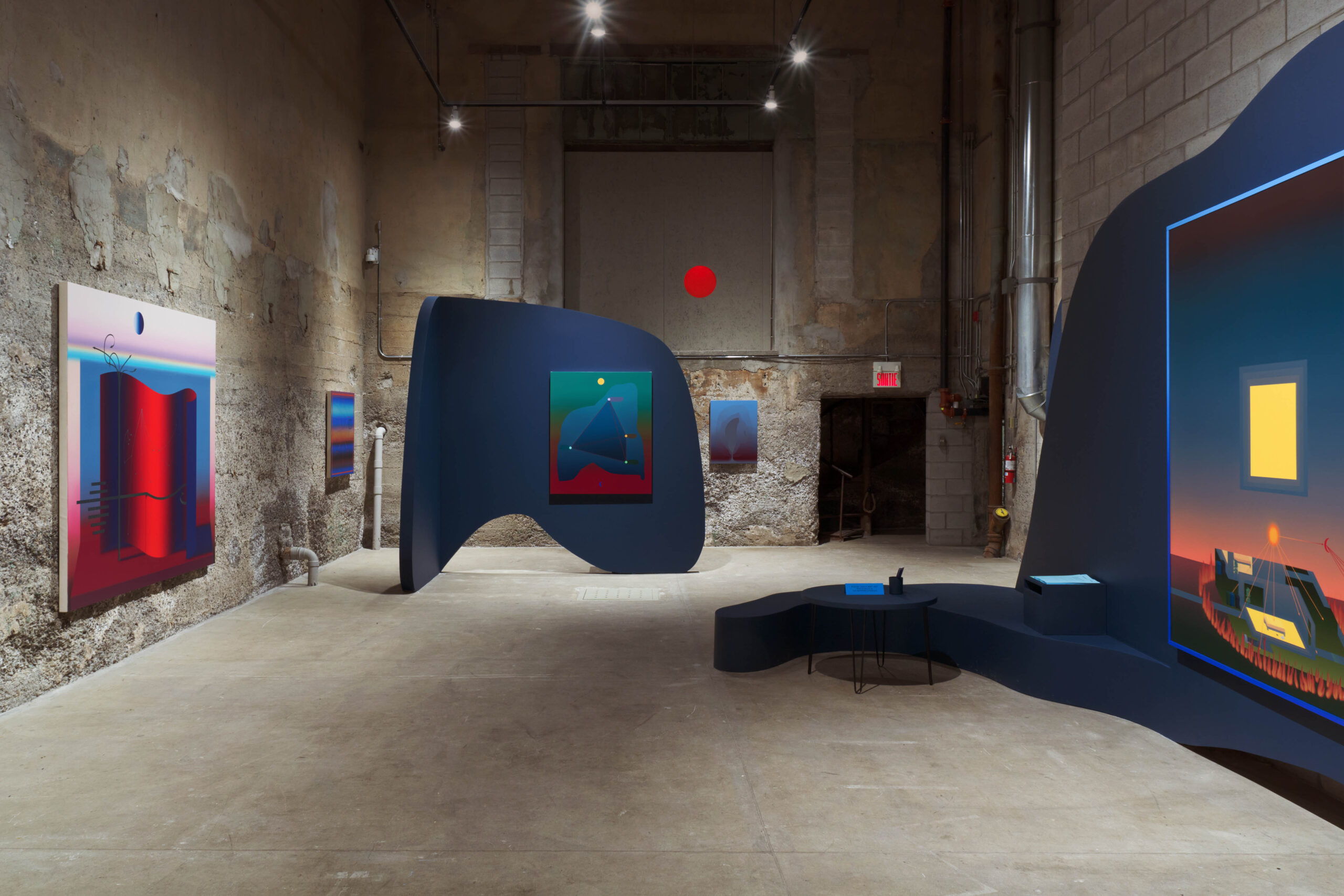
Bradley Ertaskiran is delighted to present Positions, its first solo exhibition by Nicolas Grenier, which will take place in the bunker space. With this new body of work, the artist expands his multifaceted approach to art making and viewing by incorporating recent developments in the research and methods that inform his practice. The exhibition features a new series of paintings installed on irregular shaped custom-built structures as well as directly on the gallery’s concrete walls. A questionnaire developed by the artist directly engages the public within a seating area that is centrally situated among the paintings.
Nicolas Grenier’s paintings are recognizable in their meticulous crafting and seamless gradations of contrasting colour and light. Similar to previous works, they are diagrammatic and map like, yet a departure in the way that they begin to include more fluid forms. This fluidity signals an intuitive sensibility that is directly related to the manner in which Grenier constructs his paintings. Grenier’s works are seductive in their palette, form, and powerful technique – they are also familiar, as the artist consistently uses recognizable codes of large-scale power and belief systems of neoliberal society as entry points. However, as we begin to look closer, these codes are questioned directly within the paintings and the viewer is asked to correlate and consider opposing views and statements during their aesthetic experience. Where in previous works, Grenier would create rational systems that critique their own logic, new paintings adopt less of a stable visual language and incorporate precarious forms. This signals Grenier’s assertion of the uncertainty and chaos of prevailing codes. Grenier’s practice takes shape as an active response to the current political climate, by addressing narratives of power, specifically the structure of these narratives.
In Positions, Grenier begins to push the content that fuels his paintings further by directly implicating the viewer via a questionnaire developed by the artist and available within the exhibition. The design and mechanism of the questionnaire mimics the form of these most recent paintings, where tensions, such as those between progress and morality take place. The viewer is asked to situate oneself on an x,y axis in accordance with their answers to simple yet complex questions. The impact of such participatory mechanisms is to make the viewer aware that they are participants in a system, and to consider what that system is and where it is going. Notions of positions and progress run throughout Grenier’s practice and research, they feed his love for painting with content, and they also signal his dedication and desire to open up his practice to dialogue. Grenier actively wants to converse with his viewers about the world they live in, his paintings provide an audience and an opportunity for this to occur. The artist collects data that will unlikely fit neatly into columns or boxes, thus questioning the very possibility for a definitive position. This is a significant gesture in an era of deeply divisive politics, one that signals the imperative need to develop new systems that account for a plurality of visions, values and perspectives.
Nicolas Grenier (born in 1982) lives and works in Montreal and Los Angeles. He holds a BFA from Concordia University, an MFA from the California Institute of the Arts, and attended the Skowhegan School of Painting and Sculpture (Maine). His work has been exhibited at the Power Plant (Toronto), the Musée national des beaux-arts du Québec (Québec City), the Biennale de Montréal (Montréal), the Commonwealth & Council (Los Angeles), the Gagosian Gallery (Athens), the Bruges Contemporary Art and Architecture Triennial (Belgium), and Union Gallery (London, U.K.). His work has been collected by the Musée national des beaux-arts du Québec, the Musée d’art contemporain de Montréal, the Royal Bank of Canada, the National Bank of Canada, and the Progressive Art Collection, among others. Nicolas Grenier was finalist to the Sobey Art Award in 2019.
